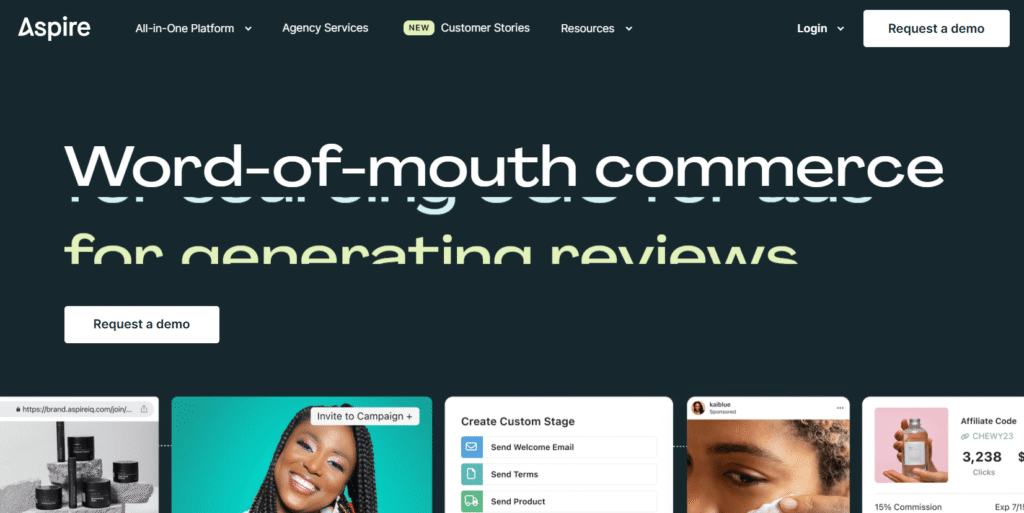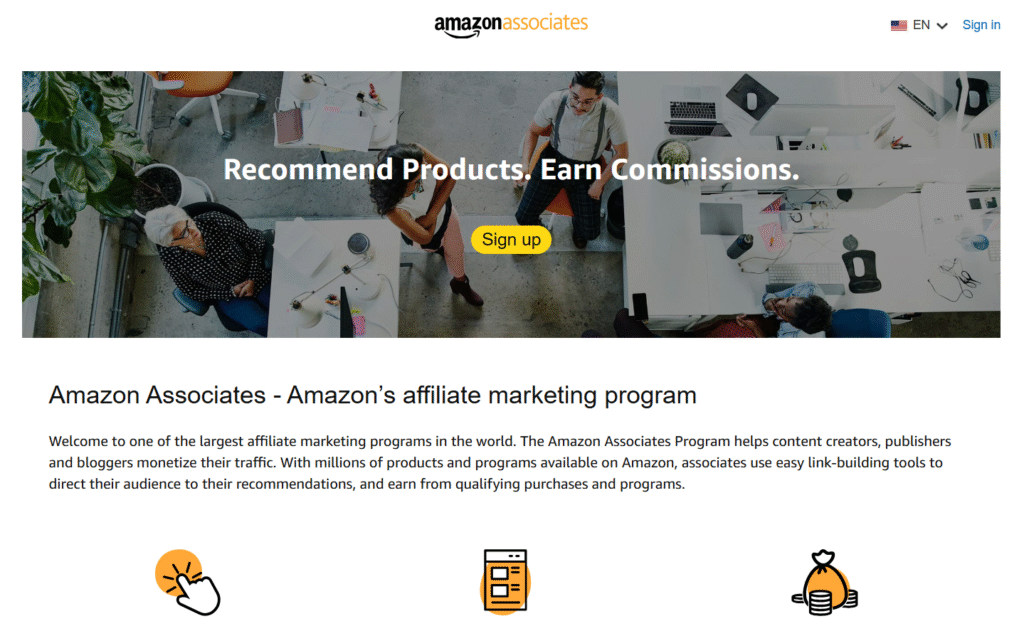How To Make Money Blogging: 10 High-Paying Methods

So you want to turn your passion for writing into cold, hard cash? Smart move! I’ve been in the trenches of the blogging world for years, and trust me, it’s not just about sharing your thoughts with the universe anymore. Blogging has evolved into a legitimate business model that can replace your 9-to-5 (or at least give it some serious competition).
Here’s the thing most people don’t tell you: making money from blogging isn’t some mystical art reserved for tech geniuses or marketing wizards. It’s a skill you can learn, master, and monetize if you know the right strategies.
After building multiple profitable blogs and helping countless others do the same, I’m sharing the exact blueprint that works.
Ready to transform your blog from a hobby into a money-making machine? Let’s jump right in.
How Do Bloggers Make Money?
Ever wondered how that lifestyle blogger affords those fancy vacations while seemingly just posting photos all day? The secret lies in diversified income streams. Most successful bloggers don’t rely on just one method; they stack multiple revenue sources like a financial pro building an investment portfolio.
The foundation typically starts with advertising revenue through platforms like Google AdSense. But here’s where it gets interesting: the real money comes from direct partnerships, affiliate commissions, and selling your own products or services.
Think of your blog as prime real estate. The more visitors you attract, the more valuable your “property” becomes to advertisers and brands wanting to reach your audience. It’s basic supply and demand economics, and you control the supply.
The beauty of blogging income? It can become increasingly passive over time. Your evergreen content keeps working for you 24/7, generating revenue while you sleep. Not bad for hitting “publish” on a post, right?
How Much Money Can You Make Blogging?
Let’s talk numbers, because that’s what you really want to know, isn’t it? 🙂
Beginner bloggers (0-6 months) typically earn $0-$500 per month. Don’t let this discourage you; everyone starts somewhere, and building an audience takes time.
Intermediate bloggers (6 months-2 years) often see $500-$5,000 monthly. This is where things get exciting, you’re covering some serious bills or maybe treating yourself to that vacation fund.
Advanced bloggers (2+ years) can earn $5,000-$50,000+ per month. Some top-tier bloggers pull in six or seven figures annually. No joke.
I personally know bloggers making $20,000+ monthly from blogs they started as side hustles. The key? They didn’t just focus on one income stream; they diversified like smart investors.
Here’s the reality check, though: these figures depend heavily on your niche, audience size, engagement rates, and how well you execute monetization strategies.
A finance blogger with 50,000 monthly readers might earn more than a lifestyle blogger with 200,000 readers, simply because financial products typically pay higher commissions.
How To Get Started Making Money Blogging For Beginners: Step-By-Step Guide
Starting a profitable blog isn’t rocket science, but it does require following the right steps in the correct order. Skip one, and you’ll likely struggle later. Here’s my proven framework:
1. Choose A Profitable Niche

This is where most people mess up. They choose a niche based on what they think is “cool” rather than what actually makes money. Smart bloggers think like investors; they research market demand before diving in.
High-paying niches include:
- Personal finance and investing
- Health and wellness
- Technology and software
- Business and entrepreneurship
- Online education and skills
But here’s the twist: you don’t need to pick the “hottest” niche. You need to find the sweet spot between your expertise, your passion, and market demand. I’ve seen food bloggers crushing it financially while tech bloggers struggle; it’s all about execution and audience building.
Research your potential niche by checking:
- Google Trends for search volume
- SEMrush or Ahrefs for keyword competition
- Existing blogs’ income reports (yes, many share these!)
- Affiliate program commission rates in your space
2. Get Domain And Hosting
Your domain name is your digital real estate address; choose wisely because changing it later is a pain (and expensive). Keep it short, memorable, and relevant to your niche.
For hosting, I recommend starting with reliable providers like:
- Bluehost (great for beginners)
- SiteGround (excellent customer support)
- WP Engine (premium option for serious bloggers)
Most hosting providers offer one-click WordPress installation, making setup incredibly easy. Expect to spend $50-150 annually for decent hosting; it’s a business expense, not a cost.
Pro tip: Many hosting companies offer free domains with annual plans. Take advantage of this deal; it saves you $10-15 per year.
3. Design Your Blog

Your blog’s design directly impacts your earning potential. Visitors judge your credibility within seconds of landing on your site. A professional-looking blog builds trust, which converts to higher click-through rates on affiliate links and ads.
WordPress themes I recommend:
- Astra (free and premium versions)
- GeneratePress (lightweight and fast)
- Divi (drag-and-drop builder)
Focus on:
- Clean, readable fonts
- Fast loading speeds (under 3 seconds)
- Mobile responsiveness
- Easy navigation
- Professional color scheme
Don’t overcomplicate it. Some of the highest-earning blogs have surprisingly simple designs. Function beats flashy every time.
4. Create A Content Calendar
Consistency beats perfection in the blogging world. Your audience needs to know when to expect new content from you. Sporadic posting kills momentum faster than anything.
I use Trello to organize my content calendar, but Google Sheets works just fine. Plan at least 30 days, including:
- Publishing dates
- Content topics
- Keywords to target
- Promotion strategy for each post
Aim for a publishing schedule you can maintain long-term. Better to post once weekly consistently than daily for two weeks before burning out.
5. Promote Your Blog
Creating great content is only half the battle. Promotion is where the magic happens. Even the best blog post won’t make money if nobody reads it.
My go-to promotion strategies:
- Share on social media (obviously)
- Email friends and family about new posts
- Engage in Facebook groups related to your niche
- Comment thoughtfully on other blogs
- Guest posting on established sites
- Pinterest for visual content
- LinkedIn for professional niches
The goal isn’t going viral (though that’s nice), it’s building a loyal audience that trusts your recommendations. Trust equals revenue in the blogging world.
10 Legit Ways To Make Money Blogging
Now for the main event, the actual money-making methods that work in 2025. I’ve personally used most of these strategies and can vouch for their effectiveness.
1. Sponsored Product Reviews

Brands pay serious money for honest reviews from trusted bloggers. We’re talking $500-5,000+ per sponsored post, depending on your audience size and engagement rates.
The keyword here is “honest.” Audiences can smell fake reviews from miles away, and Google penalizes sites with too much promotional content. I only review products I genuinely use or would recommend to friends.
How to get started:
- Build an audience first (minimum 1,000+ monthly readers)
- Create a “Work With Me” page outlining your rates
- Reach out to brands in your niche via email
- Join influencer networks like AspireIQ or Grin
Always disclose sponsored content; it’s legally required and builds trust with your audience.
2. Google AdSense
The granddaddy of blog monetization. Google AdSense pays you for displaying ads on your blog, with earnings based on clicks and impressions.
Realistic expectations:
- $1-5 per 1,000 page views for most niches
- Higher-paying niches (finance, insurance, legal) can earn $10-50+ per 1,000 views
- You need consistent traffic to see meaningful income
Getting approved requires:
- Quality, original content
- Professional website design
- Clear privacy policy and terms of service
- Decent traffic levels (though no specific minimum)
AdSense works best as supplemental income rather than your primary revenue source. Use it to fill the gaps between other monetization methods.
3. Affiliate Marketing

This is where I’ve seen bloggers make life-changing money. Affiliate marketing involves promoting other people’s products and earning commissions on sales you generate.
Top affiliate networks:
- Amazon Associates (easy to start, lower commissions)
- ShareASale (diverse product selection)
- CJ Affiliate (high-quality programs)
- ClickBank (digital products, higher commissions)
The secret sauce? Only promote products you genuinely believe in. I’ve earned $50,000+ from a single affiliate partnership because I authentically recommended a tool I used daily.
Success tips:
- Choose products relevant to your audience
- Write honest, helpful reviews
- Create comparison posts
- Use multiple content formats (reviews, tutorials, lists)
- Track your results and optimize
4. Sell Sponsored Content
Similar to product reviews but broader in scope. Sponsored content includes guest posts, brand mentions, and custom content creation for companies.
Pricing depends on your metrics:
- 10,000+ monthly views: $200-500 per post
- 50,000+ monthly views: $500-1,500 per post
- 100,000+ monthly views: $1,000-5,000+ per post
I charge based on:
- Monthly page views
- Email subscriber count
- Social media following
- Domain authority
- Niche relevance
Create a media kit showcasing your statistics and audience demographics. Professional presentation leads to higher-paying opportunities.
5. Offer Services
Your blog serves as the ultimate portfolio and marketing tool for your services. Successful blogs position you as an expert in your field, making it easier to charge premium rates.
Service ideas by niche:
- Finance bloggers: financial planning, investment consulting
- Marketing bloggers: social media management, content strategy
- Tech bloggers: web development, software consulting
- Health bloggers: nutrition coaching, fitness planning
I’ve charged $150+ per hour for consulting services directly related to my blog’s expertise. The blog builds credibility and attracts higher-quality clients.
6. Sell Digital Products
Digital products offer the best profit margins in the blogging world. Create once, sell repeatedly with minimal ongoing costs.
High-converting digital products:
- Online courses ($97-997+)
- Ebooks ($9-49)
- Templates and printables ($5-29)
- Software tools (subscription-based)
- Membership sites ($29-297+ monthly)
I’ve sold over $100,000 in digital courses created from my blog content. The beauty? Your blog content serves as proof of your expertise and free marketing for your products.
Platforms to consider:
- Teachable for courses
- Gumroad for simple digital downloads
- ConvertKit for email marketing automation
7. Sell Physical Products

Don’t overlook physical products; they can generate substantial revenue with the right approach. Print-on-demand services eliminate inventory risks while maintaining healthy profit margins.
Popular physical products for bloggers:
- Branded merchandise (t-shirts, mugs, stickers)
- Books (traditional publishing or self-publishing)
- Planners and journals
- Art prints and posters
Platforms I recommend:
- Printify (integrates with Shopify and Etsy)
- Redbubble (built-in marketplace)
- Amazon KDP for books and planners
The key is creating products your audience actually wants. Survey your readers, check comments for common questions, and pay attention to what they’re already buying.
8. Speaking Gigs
Your blog establishes your authority and expertise, making you an attractive speaker for conferences, workshops, and corporate events.
Speaking fees typically range:
- Local events: $500-2,500
- Regional conferences: $2,500-7,500
- National conferences: $7,500-25,000+
- Corporate workshops: $5,000-50,000+
Build your speaking credentials:
- Start with local meetups and small events
- Create a speaker page on your blog
- Develop 2-3 signature presentations
- Record videos of your talks
- Network with event organizers
I’ve earned more from a single speaking engagement than some bloggers make in six months. The blog opens doors to opportunities you never imagined.
9. Promote Content Creators
The creator economy is exploding, and established bloggers can profit by promoting emerging creators. This includes YouTubers, podcasters, newsletter writers, and social media influencers.
Revenue opportunities:
- Sponsored mentions in blog posts
- Email newsletter promotions
- Social media shoutouts
- Collaborative content creation
- Revenue-sharing partnerships
Rates vary widely based on your reach and the creator’s budget. Start with smaller creators who might offer $50-200 for promotion, then work your way up as your influence grows.
10. Teach Others
The meta-monetization method: teach other people how to blog and make money from it. If you’ve successfully monetized your blog, others will pay to learn your methods.
Teaching opportunities:
- Online courses about blogging
- One-on-one coaching ($100-500+ per hour)
- Group coaching programs ($497-2,997+)
- Workshops and masterclasses
- Membership communities ($29-97+ monthly)
This creates a beautiful feedback loop: your success story becomes your product. The more successful your blog becomes, the more valuable your teaching becomes.
4 Skills You Need To Succeed in Blogging
Success in profitable blogging requires mastering specific skills. You don’t need to be perfect at everything immediately, but developing these areas will significantly impact your earning potential.
1. Writing
Obviously, right? But here’s what most people miss: blogging requires different writing skills than academic or corporate writing. You need to write conversationally, persuasively, and engagingly.
Key writing skills for profitable blogging:
- Headlines that grab attention
- Storytelling that keeps readers engaged
- Clear, scannable formatting
- Persuasive calls-to-action
- SEO-optimized content structure
Improve your writing through:
- Reading successful blogs in your niche
- Taking courses on Skillshare or Udemy
- Practicing daily (even 15 minutes helps)
- Getting feedback from other bloggers
- Studying copywriting principles
2. Editing
Poor editing kills credibility faster than anything. Spelling errors and grammar mistakes make readers question your expertise, not great for conversion rates.
Essential editing skills:
- Proofreading for typos and grammar errors
- Fact-checking your claims
- Ensuring logical flow and structure
- Optimizing for readability
- Formatting for online consumption
Tools that help:
- Grammarly for grammar and style
- Hemingway Editor for readability
- ProWritingAid for comprehensive editing
FYI, I still use editing tools after years of professional writing. Even experts need backup.
3. SEO
Search Engine Optimization determines whether your content gets found. The best blog post in the world won’t make money if nobody reads it.
Critical SEO skills:
- Keyword research and selection
- On-page optimization (titles, headers, meta descriptions)
- Content structure and internal linking
- Technical SEO basics (site speed, mobile optimization)
- Understanding search intent
Learning resources:
- Moz Beginner’s Guide to SEO
- Ahrefs Blog for advanced techniques
- Google Search Console for data
SEO takes time to show results, but the compound effect is incredible. Posts I wrote years ago still drive traffic and revenue today.
4. Analytical Skills
Data drives profitable blogging decisions. You need to understand what’s working, what isn’t, and where to focus your efforts.
Key metrics to track:
- Traffic sources and growth trends
- Top-performing content and pages
- Conversion rates for different monetization methods
- Email subscriber growth and engagement
- Revenue per visitor and per email subscriber
Essential tools:
- Google Analytics for traffic data
- MonsterInsights for WordPress integration
- ConvertKit for email metrics
- Hotjar for user behavior analysis
Numbers don’t lie; they tell you exactly where to double down and where to pivot. IMO, bloggers who ignore analytics are just playing an expensive guessing game.
Final Thoughts
Building a profitable blog isn’t about getting lucky or finding some secret hack. It’s about treating your blog like a real business with multiple revenue streams, consistent value creation, and strategic growth.
Your first dollar from blogging might take months, but once the momentum builds, growth can be exponential. I’ve seen bloggers go from $0 to $10,000+ monthly in under two years.
The key is starting now and staying consistent. Every successful blogger started with zero readers, just like you. The only difference? They started.
Ready to turn your passion into profit? Your future self will thank you for taking action today.








